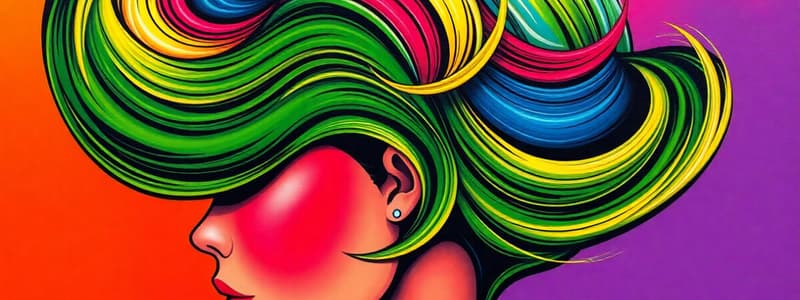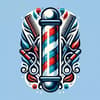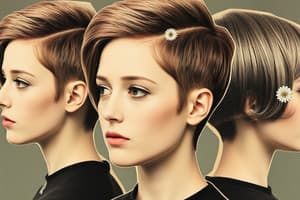Podcast
Questions and Answers
Which of the following shapes is NOT considered one of the main shapes in haircut geometry?
Which of the following shapes is NOT considered one of the main shapes in haircut geometry?
- Circle
- Triangle
- Rectangle (correct)
- Square
What is the primary purpose of understanding geometric shapes in barbering?
What is the primary purpose of understanding geometric shapes in barbering?
- To choose the right scissors
- To measure hair strands accurately
- To create unique colors
- To design haircuts effectively (correct)
Which shape is best suited for creating volume in a haircut?
Which shape is best suited for creating volume in a haircut?
- Oval
- Square
- Circle (correct)
- Triangle
How do shapes like square and triangle contribute to haircuts?
How do shapes like square and triangle contribute to haircuts?
What is a common misconception about the use of geometry in haircutting?
What is a common misconception about the use of geometry in haircutting?
Flashcards
Circle
Circle
A round shape with no corners or edges. It's a fundamental building block for many haircuts, especially those with rounded layers or a soft, flowing look.
Square
Square
A shape with four equal sides and four right angles. It creates a clean, structured look in haircuts, often used for square layers or boxy shapes.
Triangle
Triangle
A shape with three sides and three angles. It adds volume and movement to haircuts, commonly used for triangular layers or textured styles.
Geometric Shapes in Haircuts
Geometric Shapes in Haircuts
Signup and view all the flashcards
The Power of Geometry
The Power of Geometry
Signup and view all the flashcards
Study Notes
Circle Shape in Haircuts
- Circular shapes are often used in haircuts to create a smooth, flowing, and often rounded look.
- Rounded edges or softened angles in a haircut incorporate circular elements.
- The use of circular movements and sections during a haircut can produce a complete circle or partial circles for different parts of a head.
- A circular shape haircut pattern often yields an overall aesthetic that is rounded and balanced.
Square Shape in Haircuts
- Square shapes in haircuts are characterized by straight, sharp angles and strong, distinct lines
- The use of square shapes involves defining clear edges and lines in the hair, potentially using angular sectioning to ensure crisp cuts.
- Different square-shaped looks can be achieved by varying the size and placement of the angles within the haircut.
- Precise lines and angled sections are essential elements in creating square-shaped haircuts.
Triangle Shape in Haircuts
- Triangular shapes, in some haircuts, create a sharp and voluminous effect.
- These triangular designs often utilize a combination of angled and curved lines within the style, producing a unique and dynamic appearance.
- Triangular sectioning can lead to a focused and layered effect.
- Varying the base size and angles of the triangle shape in a haircut can alter the overall volume and style.
Combining Shapes
- Haircut designs frequently blend multiple shapes from the basic circle, square, and triangle.
- A blend of shapes creates a personalized look, taking advantage of the strength and contrast created by different shapes.
- When merging shapes, the barber needs a precise understanding of where each shape transitions into another.
- Each blend will vary, adjusting for head shape and desired aesthetics.
Geometry in Barbering: Importance of Understanding
- A comprehensive understanding of geometry is crucial for creating various haircuts.
- A solid grasp of using these geometric fundamentals allows the barber to precisely position sections and layers.
- Visualizing and recreating these shapes helps to achieve the desired look and symmetry.
- Having this knowledge allows for precise control over hair transitions and layers.
Studying That Suits You
Use AI to generate personalized quizzes and flashcards to suit your learning preferences.





